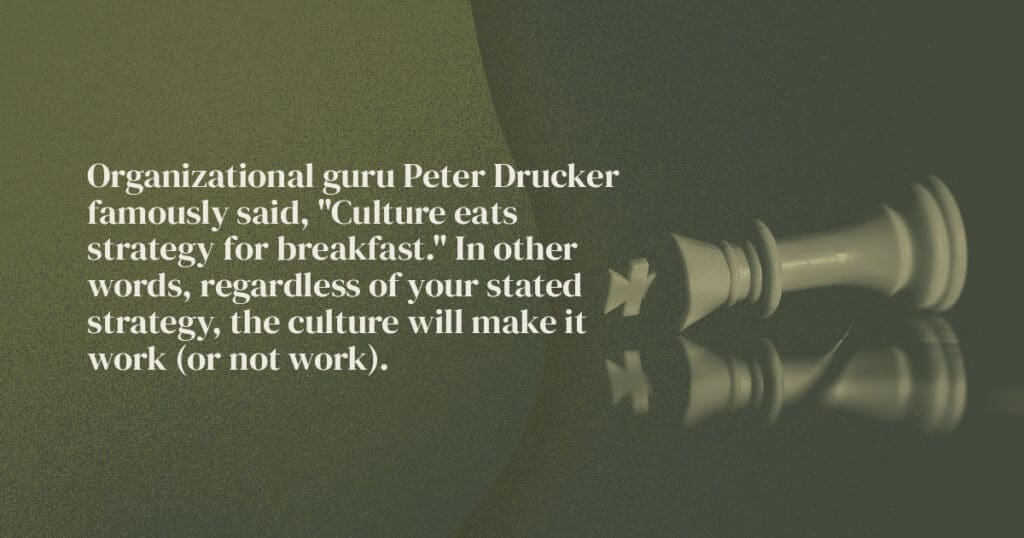When I was first hired into full-time ministry at my church, it was a dream come true. I’d spent a few years praying for an opportunity and investing in myself so that I could be ready if one came. Everything about it was exciting. And there was one part I was especially excited to experience: the church staff meeting.
Attending the church staff meeting meant I was no longer a wannabe on the sidelines. I was actually on the team.
I had grown up playing sports and always enjoyed being part of a team. Now, I was on the team again. Going to the staff meeting was a chance to be close to the heart of our “coach” (the senior pastor) and an opportunity to build camaraderie with my “teammates” (the fellow staff).
It was exhilarating.
Over time, I realized that not everybody looked forward to staff meetings as much as I did. And, as I interacted with leaders from other churches, I figured out that some folks actually dreaded church staff meetings.
In some environments, these meetings were just one more thing on an already overcrowded schedule. In these situations, staff meetings were happening only because they had always happened. And, of course, whenever we’re doing something void of clear purpose and intentionality, it’s going to stink.

But it doesn’t have to.
Eventually, I was sent out to plant a church and had the privilege of seeing the church grow — in both people and staff. All along the way, the staff had to grow and change. And, of course, that meant our staff meetings had to adjust accordingly.
I’ve experienced leading a staff of many different sizes, whether as the solo pastor whose “staff” is a group of volunteers or as a large church pastor with layers of leadership and 30+ people in a staff meeting. At each stage, staff meetings have been essential and — more often than not — a lot of fun.
So, let’s consider church staff meetings from various angles so that your team can be as effective as possible in what God has called you to do.
What Great Church Staff Meetings Accomplish
When church staff meetings are effective, they cultivate a number of extremely valuable dynamics in the life of the church.
Model a Healthy Culture
One of the most important roles of a senior pastor is to cultivate a healthy culture. However, this is easily overlooked and underappreciated in light of all the other responsibilities a pastor has to preach, shepherd, counsel, train leaders, and provide oversight for the church.
Every group of people has a culture—sports teams, companies, families, high school drama departments… and churches.
The culture is the shared set of attitudes, behaviors, values, flinches, and relational patterns that exist within the group. Culture is the way it feels to be around a group of people. It’s a vibe. It’s a sense. It’s a dynamic — and it’s one of the most powerful dynamics in play in any church.
Organizational guru Peter Drucker famously said, “Culture eats strategy for breakfast.” In other words, regardless of your stated strategy, the culture will make it work (or not work).
A church can write anything it wants in terms of its core values, but the culture reflects what is actually valued. That’s why culture matters so much.

Culture is more caught than taught (though it can be taught), which is why it requires many shared experiences to cultivate. A church staff meeting, therefore, is a perfect environment to intentionally cultivate a healthy culture.
Keep Everyone on the Same Page
When everyone on the team is clear about where you’re going and what you’re doing, it’s powerful. They can pull together in the same direction and have confidence that their efforts are worthwhile.
On the other hand, it’s demoralizing to a team to not really know what’s going on or what the vision is. Everyone works hard, but it’s unclear what all that work is accomplishing.
Great staff meetings help the staff stay clear on the mission and vision. They create alignment, commonality, and cohesion. The chance of success increases, as does the enjoyment of the process.
Enriches the Spiritual Health of the Team
Many people join a church staff expecting it to be a constant source of spiritual encouragement and end up surprised that working on a church staff often feels a lot like working in any kind of job — relational challenges, grunt work, necessary but unsexy processes, and always doing more than anyone fully notices.
Despite the fact that most church staff jobs are pretty ordinary, there is an extraordinary opportunity that church staff enjoy compared to most other workplaces: intentional moments of spiritual reflection and direction.
Part of why people want to work on a church staff is to be developed spiritually. When staff meetings are going well, spiritual development is part of the equation. People are being encouraged by God’s word, invited to pray, and welcomed into mid-day experiences of worship.
The Heartbeat of Your Church Staff
You could sum all this up by saying: Great church staff meetings knit the team’s hearts together.

So much of what makes ministry effective and fun is the relational, emotional, and spiritual part. It’s not getting stuff done that makes ministry a blast, but getting stuff done with people you love in ways that connect with your truest self and make an eternal difference for God.
The best ministry teams don’t just share a payroll company; they share a heartbeat.
Great church staff meetings are an environment for the leader(s) to demonstrate and articulate a particular heart and for the rest of the team to join in.
And when the hearts are knit together, it brings together the above three elements: a healthy culture of people pulling in the same direction and doing it from a place of connection with God.
Types of Church Staff Meetings: You Have More Options Than You Think
Having considered what great church staff meetings accomplish, we turn to the possible types of meetings to pursue those goals.
For some leaders, it never occurred to them that there could be different types of meetings. They tend to just do what they saw somebody else doing or what they’ve always done.
Consider these options for types of meetings:
- Standing Meetings. These are short meetings (5-15 minutes) where people literally are standing up. They keep the team aligned and provide a quick opportunity for updates, running through a schedule, and answering quick questions. They don’t go long because nobody wants to stand that long.
- Devotional & Discipleship Meetings feel more like going to chapel than a business meeting. The purpose is to connect with the Lord and his purposes. In these meetings, it’s common to pray together, have your Bible open, and maybe even sing together.
- Training Meetings are devoted particularly to some area of training or teaching, whether it be an area of theology, philosophy of ministry, or practical ministry skills. They often involve handouts or slide decks.
- Big News Meetings are when there’s something important to share, whether about personnel changes or key new initiatives.
- Tactical Team Meetings usually last around 60 minutes and focus on discussing and resolving key issues with near-term consequences. Often, a simple agenda can be prepared in advance or even determined at the front of the meeting.
- Strategic Meetings usually last a few hours and cover one main topic that is further into the future or will have a longer-term impact. These meetings often involve brainstorming, debating, healthy arguing, and working towards a decision. Unless it is specifically a meeting to brainstorm options, these meetings are usually helped by somebody writing a proposal in advance for the group to interact with.
- Debrief Meetings can happen as often as there are big events or experiences that are worth learning from (in some churches, there is a weekly debrief of the Sunday service as well). These meetings try to ask what worked well, what didn’t, what was confusing, and what was missing.
- Offsite Meetings are good to have annually or quarterly to zoom out, assess the organization’s landscape, and do long-range planning. Often, these offsite meetings can be a series of interconnected strategic meetings that work toward big-picture alignment. Doing them offsite often helps the group think differently — since getting away from the normal rhythm and environment often sparks fresh thinking.
One key to creating great staff meetings is to arrange your meetings according to the needs of that particular moment and group. Each of these meetings requires different kinds of attention, energy, creativity, and thinking.
Too often, leaders try to jam multiple of these meetings into one longer meeting, which often leads to one long, difficult meeting where everyone’s brains feel like they are inside a pinball machine. It is better to have separate, shorter, laser-focused meetings on a particular outcome.
Additionally, the types of meetings that are needed vary depending on the type of team or staff you’re leading.
What Game Are You Playing? An Illustration for Understanding Your Staff
Because there is no one-size-fits-all approach to great staff meetings, we must consider the dynamic of the team — especially based on size and focus.
In his book Sticky Teams, Larry Osborne describes how different-sized staffs really function like playing different sports. His point is that larger churches aren’t just bigger versions of smaller churches but that they’re playing a totally different game regarding how the leaders relate, communicate, and make decisions.
There are many implications for this observation and analogy, but let’s reflect on the “games” that different-sized staffs play and how it influences your approach to staff meetings.
- Decathlete
- Golfing Buddies
- Basketball Team
- Football team

Decathlete: The church planter or solo pastor often performs alone and has to do many different events, often without much help. There’s tons of freedom, but it’s also lonely.
In this situation, the “staff” is almost all volunteer leaders. These folks are busy with work and family, and time is precious. A lousy meeting is costly and demoralizing to people with already packed schedules.
Rather than being highly tactical, these meetings are usually vision and heart-oriented to keep these hard-working leaders connected to the bigger purpose. Most tactical work, updates, and decisions must be communicated through email, phone calls, or individual conversations.
In this stage, a pastor may benefit from having occasional special meetings that are more like the “Strategic” or “Offsite,” where leaders spend extended time trying to solve a specific set of problems.
Golfing Buddies: A small staff team is like a group of friends playing golf. Some are great, some are lousy, but it doesn’t matter — it’s just fun to do it together. Everyone watches everyone else’s shots, and it’s highly relational. It feels like colleagues and close friends.
There’s not much distinction between the “senior leadership” and the “staff” in this staff size — it’s basically the same group of people.
Small staff teams need to do the most work to distinguish between the types of meetings they’re having. Otherwise, every meeting starts to feel the same or ends up mushed into one.
These teams would benefit from having 1-2 separate and specifically focused meetings per week rather than just one all-in-one meandering meeting.
Basketball Team: As it grows, it’s still a team — but now there’s more specialization. Now, there are starters, bench players, and a star who takes clutch shots. Everyone still watches every play. Camaraderie is high, but nobody expects to be best friends.
The shift from Golfing Buddies to Basketball is one of the more challenging moves because it involves loss for some people. What once was everyone in the same room for everything is now some people in the room for everything and other people in the room if needed.
In other words, there’s now a difference between “senior leadership” and the “staff.”
At this stage, there are usually multiple smaller teams working on particular areas of ministry, each of which might do a number of the kinds of meetings outlined above.
Because most of the creative work, decision-making, and troubleshooting is taking place in these smaller environments, the “all-staff” meeting becomes more about spiritual and relational connection, sharing vision and heartbeat, and creating bonding experiences.
In Basketball, the overall staff is still relatively small and often sees and relates to each other informally. Therefore, all-staff meetings can happen less frequently (maybe monthly or bimonthly).
Football Team: Large teams are highly specialized, with sub-teams that don’t even know what others are always doing. There’s a close-knit relationship within sub-teams, but any person may hardly even know everyone else on the larger team. Trust is required, even though relationships are thin.
At this stage, another staff layer typically emerges: “middle management.” Rather than everyone on staff reporting to one of the senior leaders, some will start reporting to other staff who then report to senior leadership.
When a staff is playing football, there are often multiple paid people in each department or ministry area, and each of these teams feel like they are doing their own version of Golfing Buddies.
At this point, the key role of “all-staff” meetings is to create connection around vision and heartbeat and fight against the natural silos that develop between teams. Staff meetings become a strategic moment to cultivate appreciation for other teams and leaders and create relational experiences for people to get to know those outside their close working relationships.
In Football, the staff is so large and otherwise disconnected that meeting more frequently (even for shorter periods) becomes valuable.
This is where my church’s staff currently is. We now have a weekly “standing” meeting (where everyone literally stands for up to 15 minutes to find out about what’s happening over the next week on campus) followed by a 45-minute staff meeting that is focused largely on camaraderie, spiritual development, training, and culture-building.
Decide What Game Your Staff Is Playing
One of the most challenging dynamics in a growing church has to do with “what game we’re playing.” For many staff, the sweet spot is probably golf or basketball — large enough to be part of a team but small enough for it to feel close.
But, inevitably, change is required as it grows. So wise pastors and leaders take a “for now” approach to their team and all-staff meetings, knowing that the needs will change and adapt over time.

Simple Suggestions for Better Church Staff Meetings
It’s not as hard as some people think to make meetings better. Here are ten suggestions:
- Get the right people in the room — too many people or the wrong people wastes time.
- Prepare (it doesn’t take much) — Just 10-15 minutes of jotting down bullet points to prep will make the meeting 80% better.
- Make them shorter — cutting 15 minutes would improve almost every meeting.
- Make them longer — big vision conversations, strategic overhauls, and deep relational investments should get more time.
- Draw out thinkers — Be sure to invite input from those least likely to pipe up. You need them.
- If it can be sent in an email, leave it out of the meeting — email updates allow follow-up if needed.
- If somebody has to be on Zoom, everyone is on Zoom — it’s much easier to do a virtual meeting with everyone rather than one person trying to listen in to the larger room.
- When possible, end early — there’s something psychologically satisfying about a meeting that ends a few minutes early.
- Give margin on the front and back of meetings — that way, if it goes long or something happens that needs attention, you’re not forced to rush out abruptly.
- Value the “wasted time” before and after — the time before & after are where camaraderie is built, jokes emerge, and one-off stuff can get dealt with.
Staff Meeting Devotions & Prayer
Once there’s a staff of about five people or more, it’s often helpful to have devotional moments as a staff. Ten ideas on how to do this well:
- Make it short. One helpful, thoughtful idea is often better than delivering another full sermon.
- Share from the heart. It helps staff to feel and experience the heartbeat of a leader. Don’t only share what sounds good, but what moves you personally.
- Pray for each other. You’re doing spiritual work. So pray for each other.
- Use think-pair-share to facilitate discussion. This approach asks a question and then gives people a few minutes to think by themselves, then another handful of minutes to pair up with another person to talk about it, before finally widening the circle and sharing as a whole group. This helps people have more articulated thoughts and tends to help those less likely to speak up feel comfortable doing so.

- Leverage video teaching. Sometimes people need to hear the same ideas from somebody else (every parent knows this). Don’t be afraid to watch a talk or sermon from a preacher you respect — if it’s good, it can have a very positive impact.
- Share the moment. Devotional moments in staff are great moments to allow other staff who don’t normally teach or preach to get a “rep” having a leadership moment.
- Share personal testimonies. It’s amazing how people who work together on a church staff may not even know how each other came to faith. Take some time to share personal stories of conversion.
- Share “God stories.” Talk about how God is working among you in big or small ways. A great question to unearth these stories is, “If you had to prove God is alive based on something you’ve experienced or heard recently, what would you point to?”
- Practice gratitude. Bring a stack of blank greeting cards to the meeting with a pile of pens. Take some time to write thank you notes to people in the church who especially model the kind of ministry you hope to do more.
- Incorporate music. It’s wild how even somebody simply playing a guitar and singing can enhance the environment for prayer. Imagine you’re in a living room with friends, singing some simple songs of worship and seeking the Lord together.
The Church Staff Meeting “Silver Bullet”
Everyone is always on the hunt for some “silver bullet” for handling staff structures and meetings.
Spoiler alert: There isn’t one.
There’s not one right way to do this, and as soon as you find it, something will probably change and you’ll have to adjust again. So, take the tools and ideas from this article and adapt them. Play around. Try stuff. Take an approach for a while and then tweak and adjust.
The key is that you intentionally and thoughtfully build into your staff team. Ministry is fun. But it’s way more fun when you can do it together with a group of motivated, aligned leaders who are all heading in the same direction.

If you have specific questions that aren’t covered in this guide, send me an email. I’d be happy to interact with you about them.
I also offer coaching for pastors who need help. If you’d like a free introductory call to discuss your situation, you can schedule one here.
I’m rooting for you!
P.S. While there are similarities between a church staff and an elder board, there are often some meaningful differences as well. Check out this guide to having more effective elder meetings.

